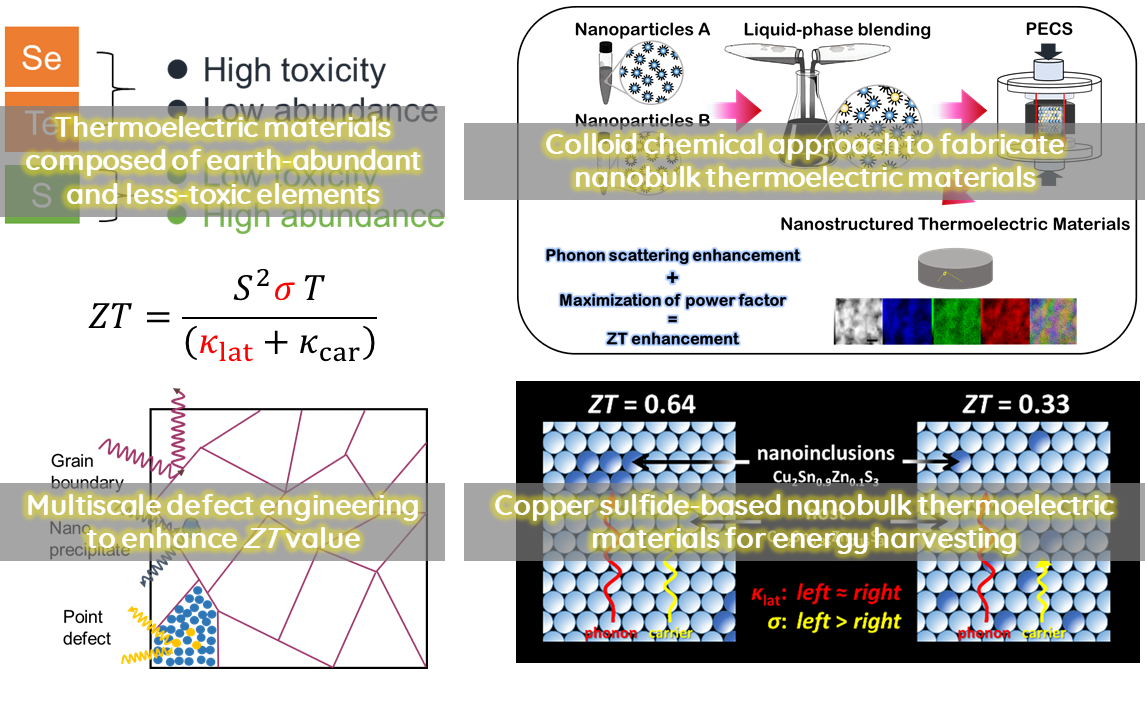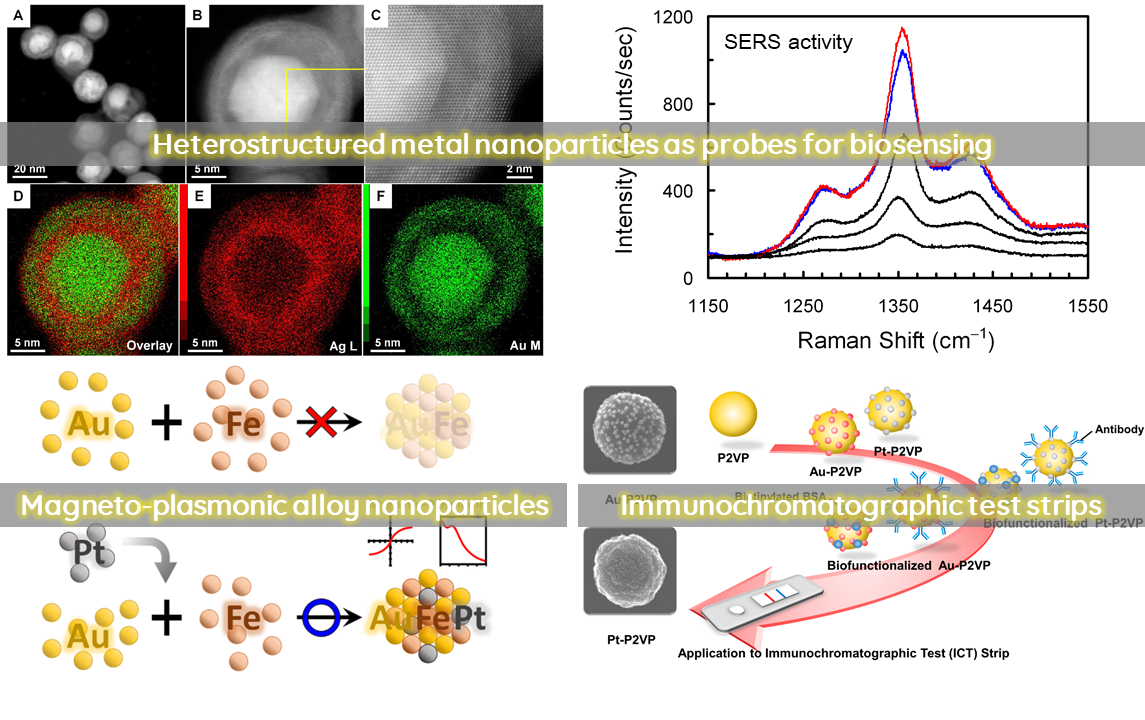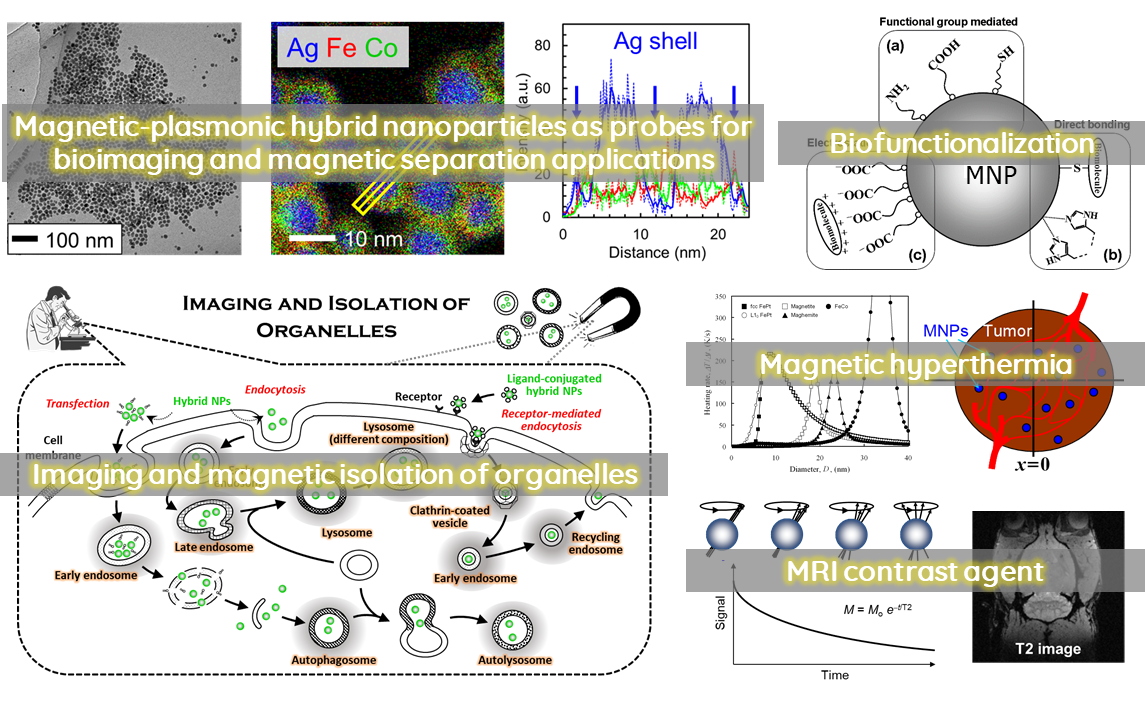Research
Thermoelectric nanoparticles
Thermoelectric (TE) materials have historically been an intriguing topic of materials science because of their potential applications in temperature measurement, temperature control, energy harvesting and power generation. In the global drive to develop sustainable energy, TE energy storage and generation technologies have attracted a tremendous interest. For practical energy harvesting and power generation applications, a TE efficiency (determined by the dimensionless figure of merit, ZT = S2σT/κ, where S is the Seebeck coefficient, σ is the electrical conductivity, κ is the thermal conductivity, and T is the absolute temperature) approaching ZT ~ 3 is required. Unfortunately, however, the existing bulk TE materials have much lower ZT value (ca. 1) mainly because of the interdependence of σ and κ which defines the limitation in the ZT value. Recently, it has been widely recognized that the nanostructured TE materials with well-defined nanoscale grain boundaries can have reduced κ without much decrease in σ through the phonon scattering/carrier transmission phenomenon. With this in mind, TE nanoparticles (NPs) have become intensely investigated as promising building blocks for high-ZT nanostructured TE materials. While there are a host of different synthesis approaches toward the creation of TE NPs, the chemical synthesis-based approaches offer the most versatility in manipulation of the individual particle characteristics including size, shape, structure, or surface properties. We are working on synthesis, characterization, or applications of novel TE nanoparticles.

Metal nanoparticles
Metal nanoparticles (e.g. gold and silver nanoparticles) have long been utilized for various types of chemical and/or biological sensing applications. At the same time, much of the knowledge being gained for manipulating nanoparticle structure or composition has focused on multimetallic type nanoparticles. Such systems can display multiple properties arising from the individual components, but it is the observation of synergistic phenomena that is the most intriguing.
By taking advantage of such synergistic phenomena in multimetallic nanoparticles including alloy, core-shell, and other heterostructures, one can enhance the sensing properties when these multimetallic nanoparticles are used as sensing probes. We focus on the synthesis of novel multimetallic heterostructured nanoparticles and their applications including, but not limited to, biosensing probes, chemical sensors, and nanocatalysts.

Magnetic nanoparticles
Magnetic nanoparticles (MNPs) show great potential for biomedical applications from diagnosis to therapy. Multifunctional heterostructured MNPs are quite interesting materials from fundamental and practical point of view. This class of hybrid MNPs include magnetic-fluorescent dual-functional nanoparticles (DFNPs) and magnetic-plasmonic DFNPs. Those DFNPs can offer new opportunities for biomedical applications.
In our research, we synthesize superparamagnetic MNPs, and then, their surfaces are coated with semiconductor or plasmonic materials. For example, we synthesized FePt@CdSe core-shell DFNPs which have superparamagnetic and fluorescent properties stemming from FePt core and CdSe shell, respectively. In another case, we have synthesized Ag@FeCo@Ag double-shell DFNPs which combine superparamagnetic and plasmonic properties. Those DFNPs can be used in nanomedicine including MRI agents, drug delivery, magnetofection, hyperthermia, magnetic separation, biosensing, and bioimaging.





